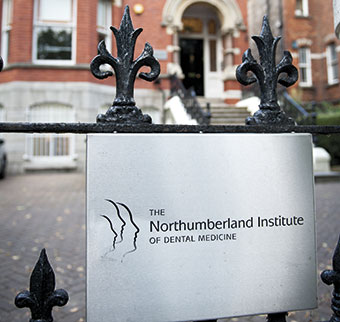To sedate or not to sedate
A sneak peak into the world of sedation by one of Ireland’s leading consultant anaesthetists Dr Michael Carey
Sedation in dentistry is nothing new – sedation has been used in dentistry since the 1840s.
However, things have moved on a lot since then. In the past, dental treatments were simpler and mainly consisted of fillings or extractions/dentures. Now, treatment is more complex and can take a long time, so patients can spend a lot more time in the chair and therefore want minimal discomfort. With increased awareness that sedation is available, dentists are starting to provide the service more and more themselves.
Sedation works best when combined with adequate local anaesthesia – the patient is pain-free, relaxed and has no memory of the procedure. The dentist can work more efficiently under these conditions, and it leaves a patient more comfortable and happy to return to the dentist.
However, sedation can go wrong. This can occur in endoscopy units where a single operator does both jobs. The operator could potentially give a relatively high dose while concentrating on the procedure, not the patients’ oxygenation. The presence of an anaesthetist is optimum in these situations.
Michael Jacksons’ death is a classic example of what can happen when the patient is not monitored and when the operator doesn’t have the skills, experience or equipment to get out of trouble.
The Northumberland Institute is an example of best practice and adheres to the strictest safety regimes, which I insist on; there must be oxygen, airway management equipment, drugs to deal with cardiorespiratory arrest and anaphylactic shock, and a defibrillator.
Everyone in the surgery has a current Basic Life Support certificate from the Irish Heart Foundation. This, on top of an extra nurse present when the patient is in the chair, is all a significant investment for any dental practice.
Finally, I think the minimum requirement is that there should be two people involved – the dentist and the sedationist.
No condition totally rules out sedation in the dental chair. However, overweight and elderly patients, or those with significant medical problems ought to be treated in a surgery which provides more intensive monitoring and after care; a general operating theatre or indeed an alternative to sedation should sometimes be sought. These are elective procedures after all.
Some dentists give sedation themselves – I suggest these steps if undertaking sedation:
(a) You are able to manage respiratory depression.
(b) You are able to manage a compromised airway including intubation and ventilation.
(c) You have the extra equipment available to manage these conditions.
(d) You have the knowledge and skills to be able to assess the suitability of a patient for sedation
(e) You do it frequently enough to be proficient.
(f) It is also more difficult and dangerous to do two tasks (sedation and dentistry), therefore a second practitioner should be present.
The sedationist must be competent; i.e. be able to assess the patients suitability for sedation, give the correct drug at the right dose for the patient, be able to get the patient out of trouble in respiratory arrest or airway obstruction and be experienced in the technique. I believe he/she should be an anaesthetist as it is what they do every day.
The alternative is no sedation. Some practices prescribe oral diazepam before a procedure, but the response is variable depending on the dose, the time of surgery, and the absorption of the drug. Hypnosis also works for some patients, but takes quite some time and training.
With my patients, I also give paracetamol and a steroid during the procedure which significantly reduces pain and swelling after the procedure.
There are some patients who request sedation for simple things like impressions, so great is their fear of dentistry. There is no doubt it has improved attendance and the experience for many as well as proven to be life changing for some.
®
To find out more about the Northumberland Institute of Dental Medicine, including details of courses, seminars and networking events, visit www.nidm.ie
ABOUT THE AUTHOR
Dr Michael Carey, BSc, MB, BCh, DipMan (RCSI), MD, FFARCSI, has been a consultant anaesthetist in the Coombe Women & Infants University Hospital and in St James’ Hospital since 1995. He is also director of perioperative medicine in the Coombe Hospital and has been carrying out sedation for dentistry in the Northumberland Institute of Dental Medicine since 2000.
